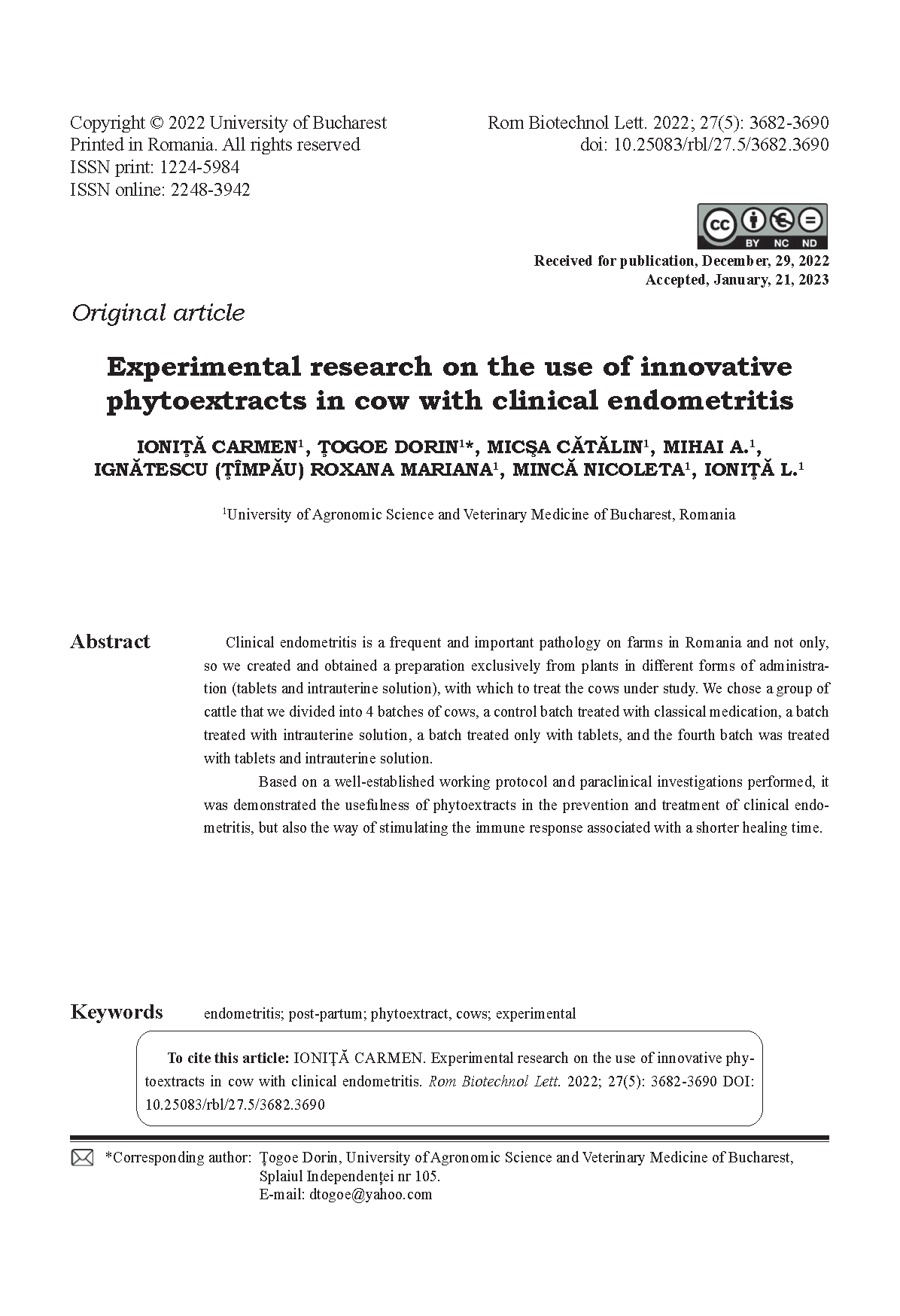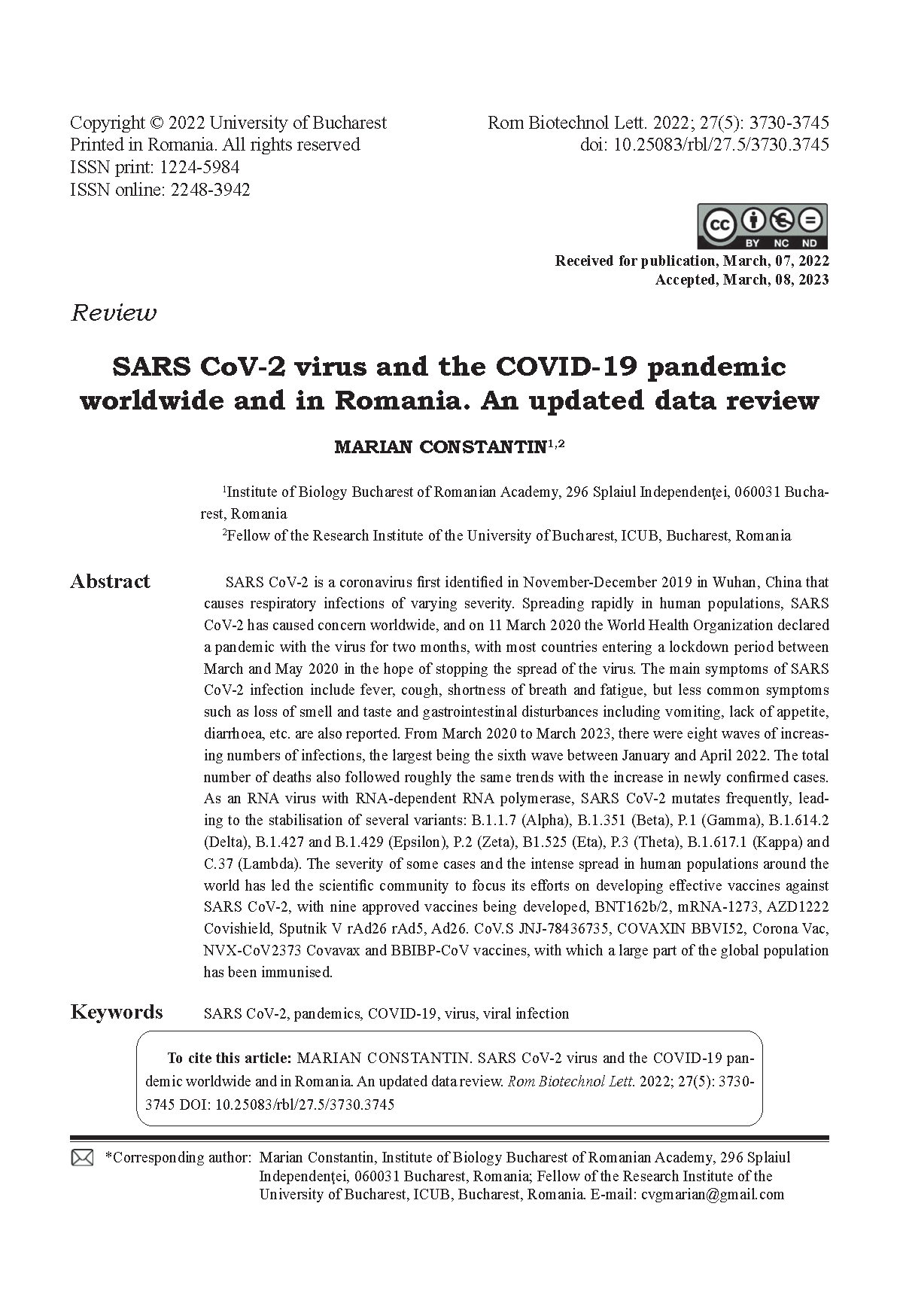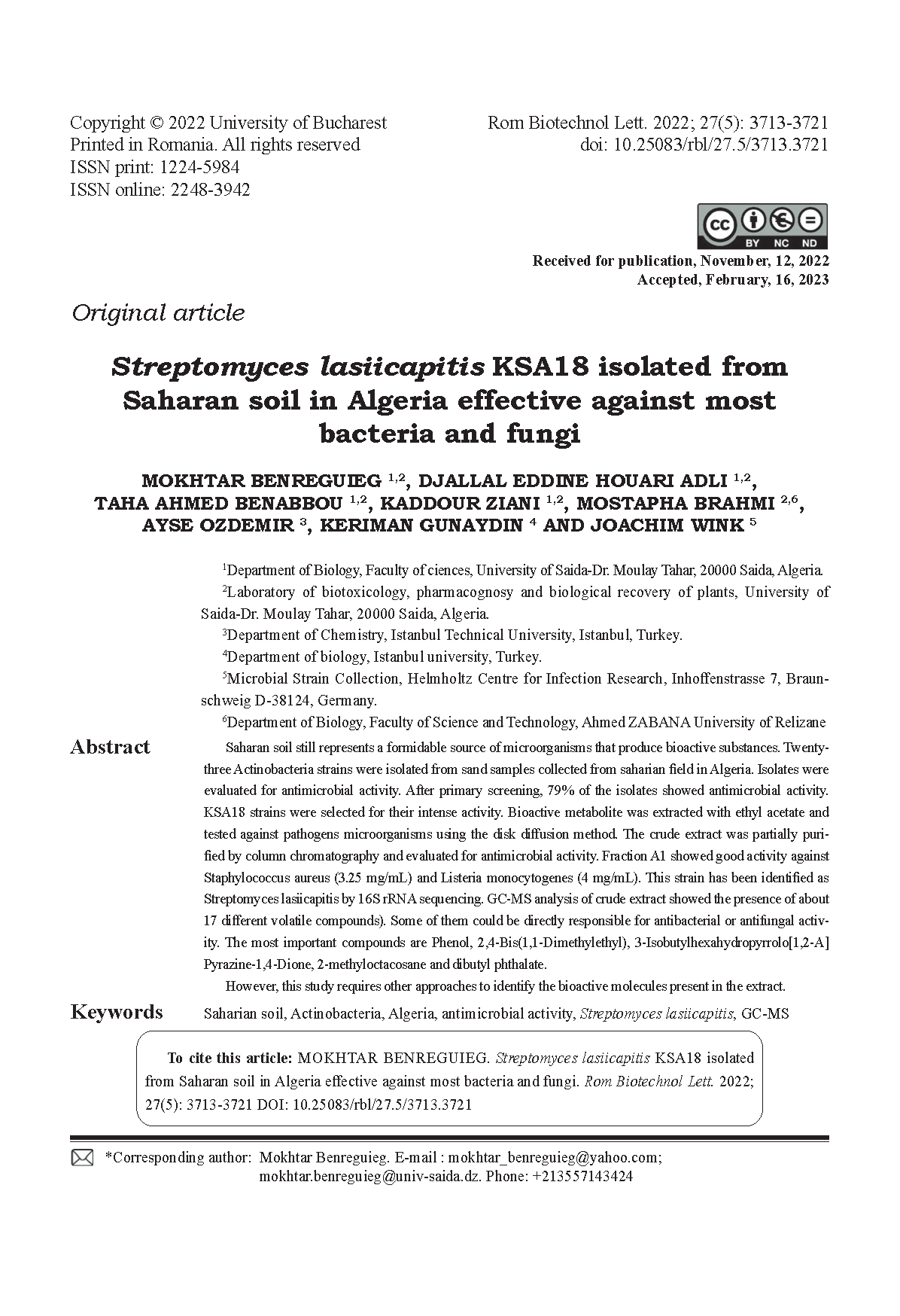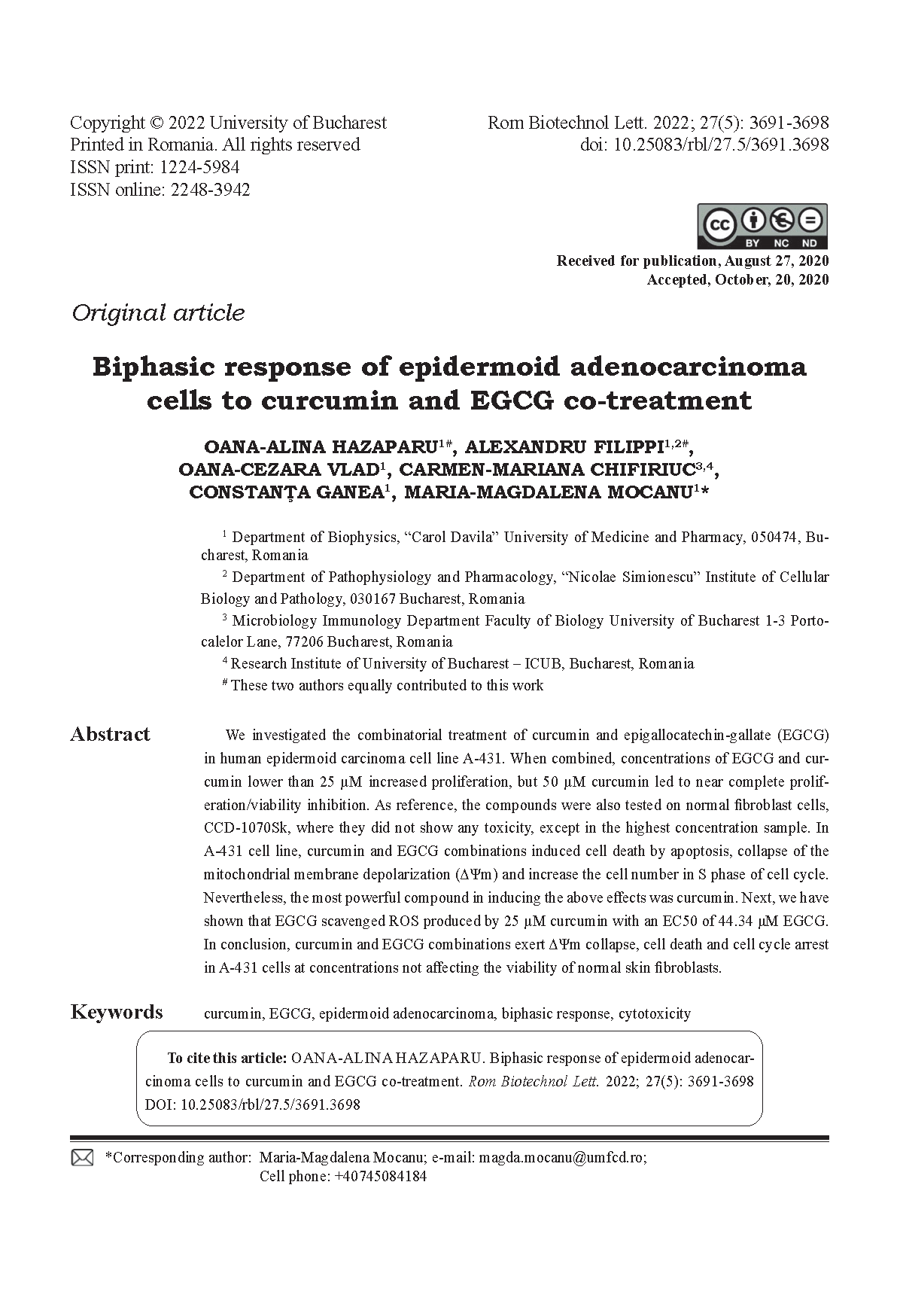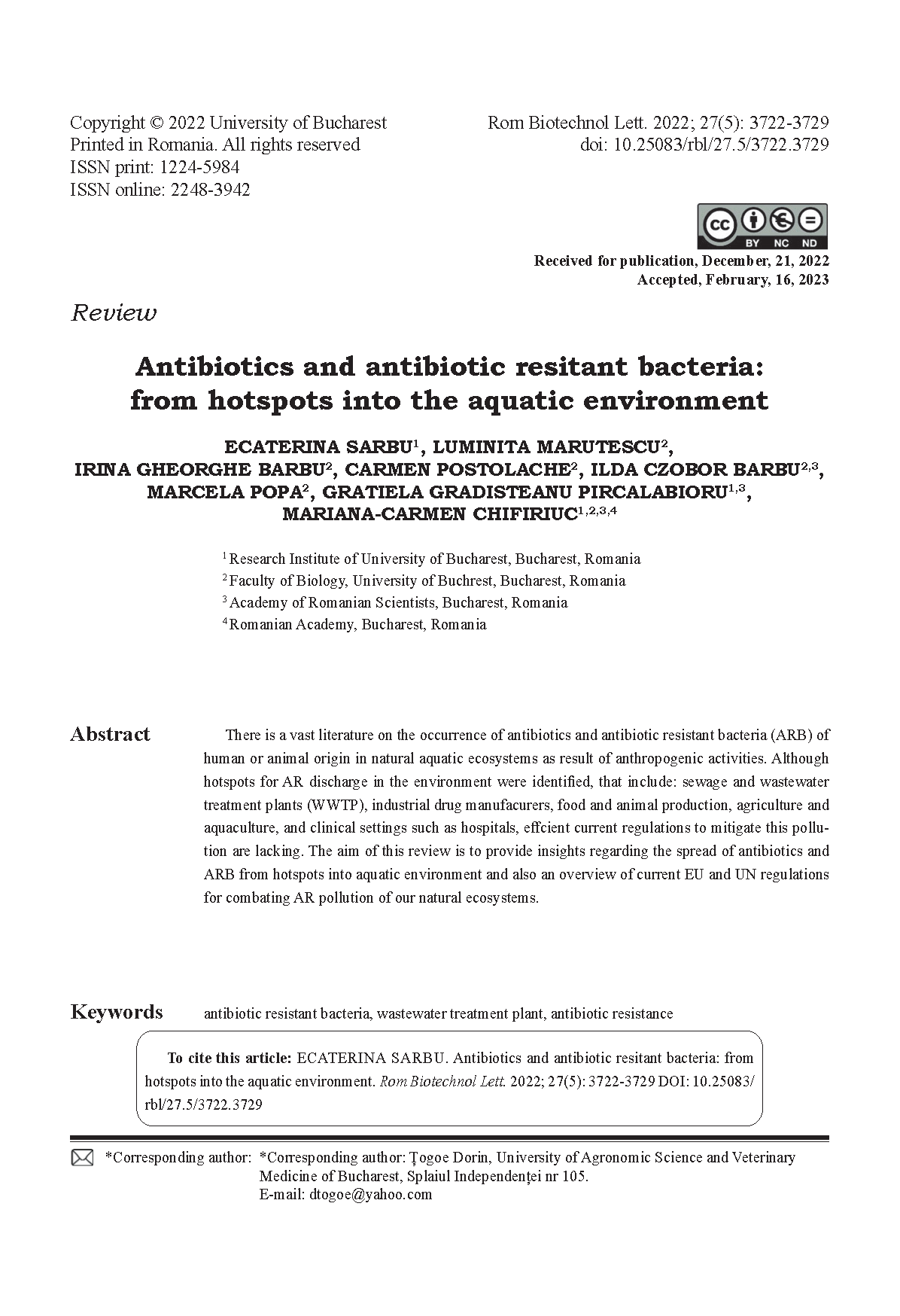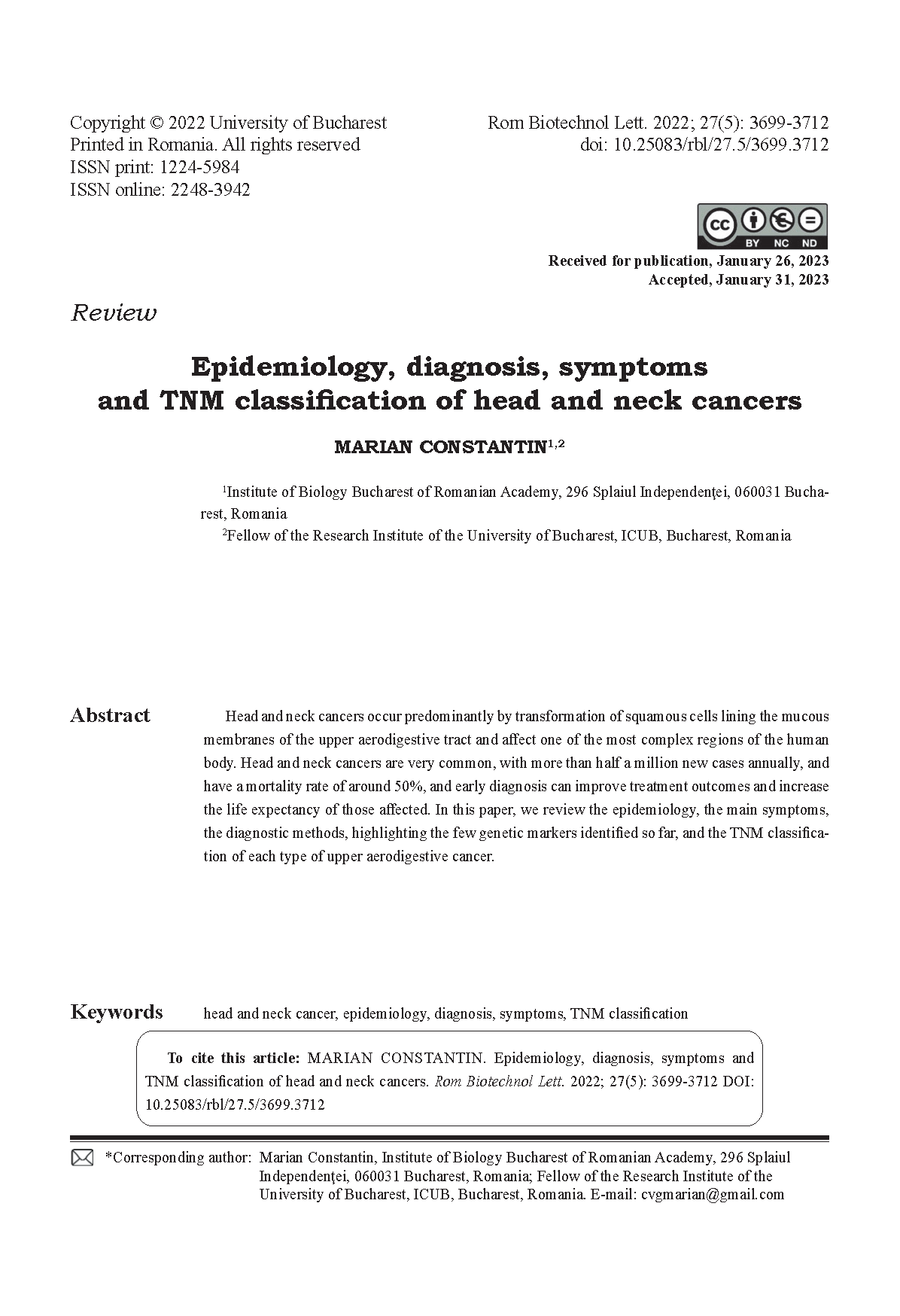Vol. 27 No. 5 (2022): Romanian Biotechnological Letters
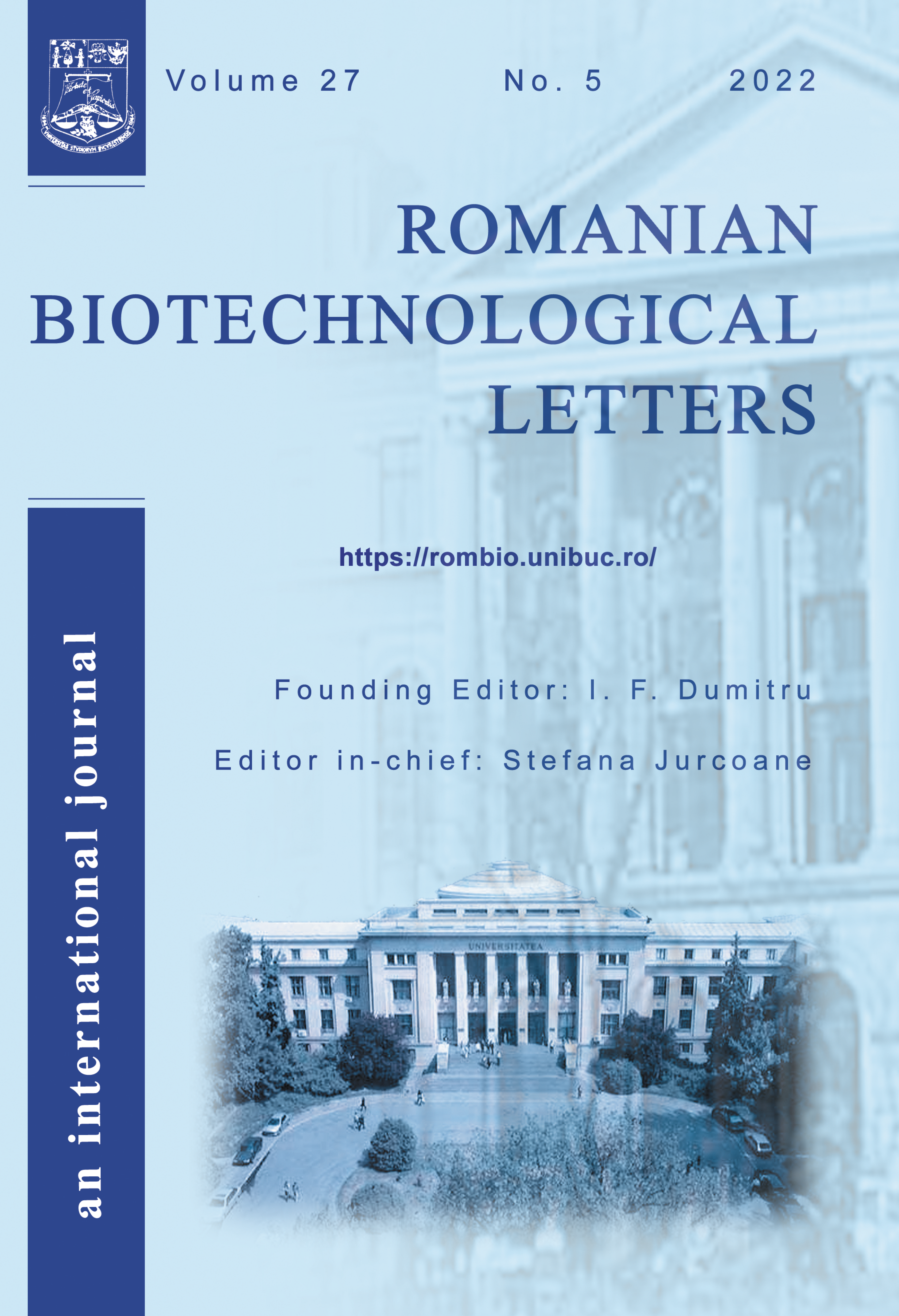
The covered topics and subjects include biotechnology (i.e., green, red, white, blue, bioinformatics) and interdisciplinary research in medicine, neuroscience, agriculture, animal husbandry, ecology and environmental protection.
Published:
2024-06-13

